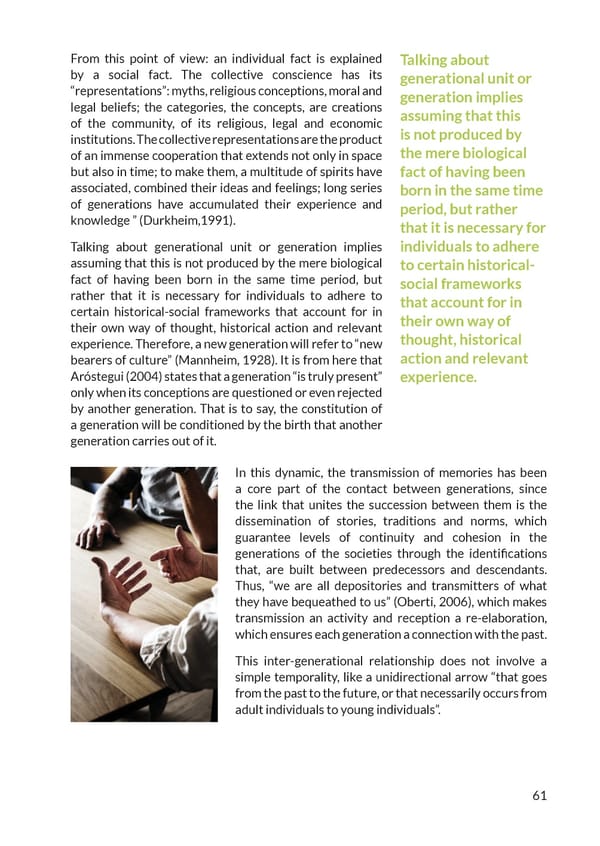From this point of view: an individual fact is explained Talking about by a social fact. The collective conscience has its generational unit or “representations”: myths, religious conceptions, moral and generation implies legal beliefs; the categories, the concepts, are creations assuming that this of the community, of its religious, legal and economic is not produced by institutions. The collective representations are the product of an immense cooperation that extends not only in space the mere biological but also in time; to make them, a multitude of spirits have fact of having been associated, combined their ideas and feelings; long series born in the same time of generations have accumulated their experience and period, but rather knowledge ” (Durkheim,1991). that it is necessary for Talking about generational unit or generation implies individuals to adhere assuming that this is not produced by the mere biological to certain historical- fact of having been born in the same time period, but social frameworks rather that it is necessary for individuals to adhere to that account for in certain historical-social frameworks that account for in their own way of their own way of thought, historical action and relevant thought, historical experience. Therefore, a new generation will refer to “new bearers of culture” (Mannheim, 1928). It is from here that action and relevant Aróstegui (2004) states that a generation “is truly present” experience. only when its conceptions are questioned or even rejected by another generation. That is to say, the constitution of a generation will be conditioned by the birth that another generation carries out of it. In this dynamic, the transmission of memories has been a core part of the contact between generations, since the link that unites the succession between them is the dissemination of stories, traditions and norms, which guarantee levels of continuity and cohesion in the generations of the societies through the identifications that, are built between predecessors and descendants. Thus, “we are all depositories and transmitters of what they have bequeathed to us” (Oberti, 2006), which makes transmission an activity and reception a re-elaboration, which ensures each generation a connection with the past. This inter-generational relationship does not involve a simple temporality, like a unidirectional arrow “that goes from the past to the future, or that necessarily occurs from adult individuals to young individuals”. 61
 MemoryHandbook new Page 60 Page 62
MemoryHandbook new Page 60 Page 62